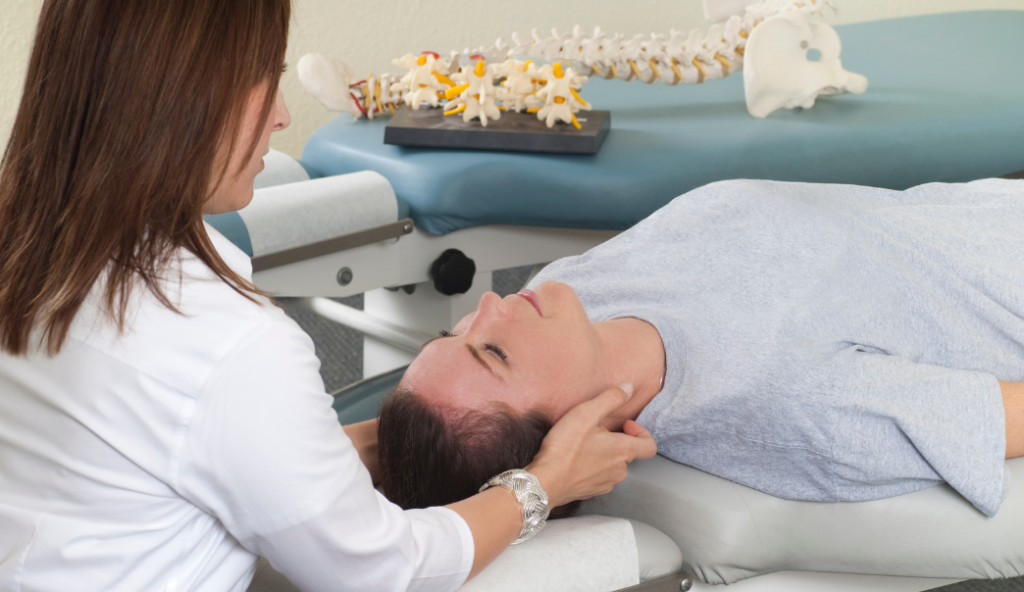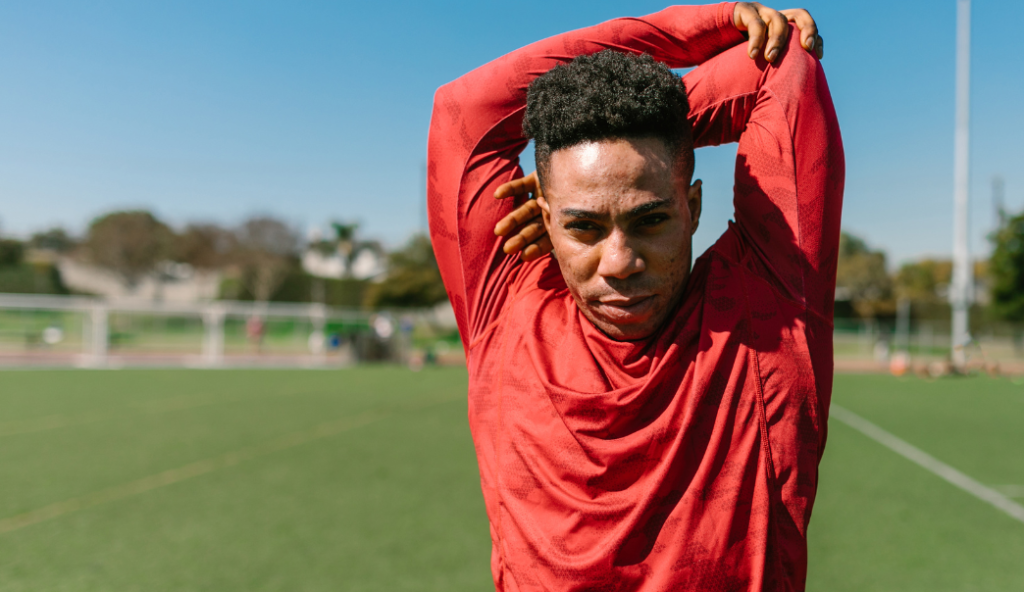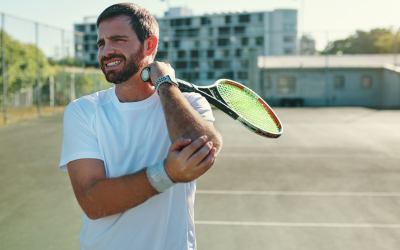Sports injuries can be painful and frustrating, as they can sideline athletes from their beloved activities. However, effective strategies can significantly reduce the risk of such injuries. In this article, our sports chiropractor will share valuable tips to help you stay injury-free and perform at your best. From the role of regular chiropractic adjustments to proper warm-up techniques and personalized exercise recommendations, we will cover it all. So, let’s dive in and explore how to prevent sports injuries and enhance your athletic performance.
Preventing Sports Injuries with Regular Chiropractic Adjustments
Regular chiropractic adjustments play a vital role in injury prevention for athletes. By ensuring proper alignment and function of the musculoskeletal system, chiropractic care helps optimize biomechanics and reduce the risk of injuries. In addition to preventing injuries, chiropractic adjustments can also improve athletic performance by enhancing flexibility, range of motion, and overall body function.
During chiropractic sessions, our sports chiropractor will assess your needs and tailor adjustments to address any imbalances or areas of weakness. By restoring balance and alignment, chiropractic care helps your body withstand the demands of sports and minimize the risk of injury.
But what exactly happens during a chiropractic adjustment? Let’s dive deeper into the process. When you visit our clinic, our sports chiropractor will thoroughly examine your musculoskeletal system. This may involve assessing your posture and range of motion and performing orthopedic tests to identify any areas of concern.
Once the assessment is complete, the chiropractor will use various techniques to adjust your spine and other joints. These techniques may include manual adjustments, where the chiropractor applies controlled force to specific areas, or instrument-assisted adjustments, where specialized tools are used to deliver precise adjustments.

Customized Care for Athletes
Every athlete is unique, and our sports chiropractor understands that. That’s why we provide customized care tailored to the specific needs of each athlete. Our goal is to optimize your performance and keep you injury-free. Whether you’re a professional athlete or enjoy recreational sports, our chiropractic team will create a personalized treatment plan that addresses your concerns and goals.
As part of your customized care plan, our sports chiropractor may recommend additional therapies to complement your adjustments. These therapies can include massage, stretching, and rehabilitative exercises to strengthen weak areas and improve overall function. By incorporating a holistic approach to your treatment, we aim to provide comprehensive care that supports your athletic goals.
The Benefits of Pre-Activity Warm-Up and Post-Activity Cool-Down
Preventing sports injuries starts even before stepping onto the field. Proper warm-up and cool-down techniques are essential for preparing your body for physical activity and aiding in recovery. Warm-up exercises increase blood flow, raise body temperature, and loosen joints and muscles, reducing the risk of strains, sprains, and other injuries.
A good warm-up routine should include dynamic movements that mimic the actions you’ll be performing during your sport. This pre-activity ritual prepares your body for the upcoming physical demands and enhances your focus and mental readiness.
Similarly, a thorough cool-down session is crucial after intense physical activity. Cooling down allows your heart rate to return to normal gradually and helps flush out waste products that accumulate in muscles during exercise. Stretching exercises during the cool-down phase promote flexibility and prevent muscle stiffness, reducing the likelihood of post-workout soreness and injuries.
Now that you understand the importance of warm-up and cool-down, let’s explore some specific exercises you can incorporate into your routine. Consider performing dynamic stretches such as leg swings, arm circles, and walking lunges for a warm-up. These movements help increase blood flow to your muscles and prepare them for the upcoming activity.
During your cool-down, focus on static stretches that target the major muscle groups used during your sport. Hold each stretch for 15-30 seconds, breathing deeply to promote relaxation and flexibility. Some effective cool-down stretches include hamstring, quadriceps, and shoulder stretches.
Remember, injury prevention is a continuous process, and regular chiropractic adjustments combined with proper warm-up and cool-down techniques can significantly reduce the risk of sports-related injuries. Prioritize your body’s well-being and invest in chiropractic care to keep yourself performing at your best.

Personalized Exercise and Stretching Recommendations
Incorporating the right exercises and stretches into your training routine can make all the difference in preventing sports injuries. Our sports chiropractor will carefully assess your specific sport, fitness level, and individual biomechanics to create a customized exercise and stretching program.
Strength training exercises targeting your sport’s muscles can help improve stability and protect against overuse injuries. Additionally, incorporating dynamic stretches into your warm-up routine can enhance flexibility, range of motion, and muscle coordination, decreasing the risk of strains and tears.
Furthermore, our sports chiropractor may suggest incorporating balance and proprioceptive exercises into your training regimen. These exercises promote body awareness, coordination, and stability, crucial factors for injury prevention, especially in sports that involve quick changes in direction or contact with other players.
For example, if you are a basketball player, our sports chiropractor may recommend exercises that focus on strengthening the muscles in your legs, such as squats and lunges. These exercises can help improve your jumping ability and reduce the risk of knee and ankle injuries. Additionally, incorporating dynamic stretches like leg swings and high knees into your warm-up routine can help improve your agility and prevent muscle imbalances.
If you are a runner, our sports chiropractor may suggest exercises targeting your lower body’s muscles, such as calf raises and hip bridges. These exercises can help improve your running efficiency and reduce the risk of common running injuries like shin splints and IT band syndrome. Dynamic stretches like walking lunges and leg swings can also help improve your stride length and prevent muscle tightness.
Importance of Proper Nutrition and Hydration
Nutrition and hydration are often overlooked aspects of injury prevention, but they play a significant role in an athlete’s overall well-being and performance. A well-balanced diet rich in nutrients and hydration can boost energy levels, support tissue repair, and reduce the risk of muscle cramps and fatigue.
Consume various fruits, vegetables, lean proteins, and whole grains to provide your body with the essential vitamins, minerals, and antioxidants it needs. Hydration is equally important, so drink plenty of water before, during, and after physical activity to maintain proper fluid balance and prevent dehydration.
Our sports chiropractor can provide nutritional guidance tailored to your sport, training intensity, and individual needs. Together, we can develop a nutrition plan that helps optimize your athletic performance and prevent injury.
For example, if you are a soccer player, our sports chiropractor may recommend a diet that includes carbohydrates for energy, lean proteins for muscle repair, and healthy fats for joint health. They may also suggest incorporating foods rich in antioxidants, such as berries and leafy greens, to reduce inflammation and support recovery.
In addition to proper nutrition, our sports chiropractor may discuss the importance of timing your meals and snacks around your training sessions to ensure optimal fueling and recovery. They may also provide tips on pre-workout and post-workout meals to maximize performance and muscle repair.
Remember, injury prevention involves the right exercises and stretches, proper nutrition, and hydration. Incorporating these recommendations into your training routine can reduce the risk of sports injuries and enhance your overall athletic performance.
Recognizing and Responding to Early Injury Signs
Despite our best efforts, injuries can still occur. Recognizing the early warning signs of an injury is critical to prevent it from worsening or becoming chronic. Pain, swelling, stiffness, and reduced range of motion are common indicators of an injury that requires attention.
If you experience any of these symptoms, listening to your body and promptly seeking professional advice is essential. Ignoring or self-medicating an injury can lead to further damage and a longer recovery process. Consulting with our sports chiropractor will help you receive an accurate diagnosis and an appropriate treatment plan tailored to your condition.
When recognizing early injury signs, paying attention to your body’s signals is essential. Pain can manifest in various ways, such as a sharp or dull ache, throbbing, or a burning sensation. Swelling may be visible or felt as a sensation of tightness or pressure in the affected area. Stiffness can make it difficult to move or perform certain activities, and a reduced range of motion may limit your ability to fully extend or flex a joint.
Understanding the specific symptoms associated with different types of injuries can help you identify the problem early on. For example, if you’re experiencing pain and swelling in your ankle after a twist or fall, it could indicate a sprain. On the other hand, if you feel pain and stiffness in your shoulder after repetitive overhead movements, it may be a sign of tendonitis.
Recognizing these early signs allows you to take immediate action, preventing further damage and facilitating a faster recovery. Seeking professional advice from a sports chiropractor is crucial because they specialize in diagnosing and treating sports-related injuries. They have in-depth knowledge of the musculoskeletal system and can provide targeted treatments, such as manual therapy, exercise rehabilitation, and preventive strategies.
Incorporating Recovery and Rest into Training
Rest and recovery are just as important as training itself regarding injury prevention. Allowing your body enough time to rest and repair after intense physical activity is crucial for avoiding overuse injuries and burnout.
Building rest days into your training schedule gives your muscles and joints time to recover and adapt. It also helps prevent mental fatigue and reduces the risk of poor decision-making on the field, which can lead to injuries. Prioritizing sleep is equally important, as it plays a vital role in tissue repair, hormone regulation, and cognitive function.
When incorporating recovery and rest into your training, it’s essential to strike the right balance. Rest days shouldn’t be seen as a sign of weakness or laziness but rather as an integral part of your overall training plan. By allowing your body to recover, you’re actually maximizing your performance potential in the long run.
During rest days, your body repairs damaged tissues, replenishes energy stores, and strengthens muscles. It’s also a time for mental rejuvenation, reducing stress levels, and enhancing focus and concentration. Neglecting rest and recovery increases the risk of overtraining, leading to decreased performance, chronic fatigue, and a higher susceptibility to injuries.
Our sports chiropractor can guide you in developing a balanced training plan with adequate rest and recovery periods. They can help you determine the optimal frequency and duration of rest days based on your needs and training goals. Additionally, they can provide valuable advice on nutrition, hydration, and self-care practices that support your body’s recovery process.
Remember, injury prevention is a proactive approach that requires proper training techniques, listening to your body, and seeking professional guidance. Recognizing early injury signs and incorporating rest and recovery into your training can optimize your performance while reducing the risk of injuries.
Essential Gear and Equipment for Injury Prevention
Having the right gear and equipment is crucial for staying safe during sports activities. Appropriate footwear with good shock absorption and proper support can help prevent foot, ankle, and lower limb injuries. Investing in well-fitting protective gear such as helmets, mouthguards, and pads can significantly reduce the risk of head, face, and body injuries in contact sports.
Consulting with our sports chiropractor can help you make informed decisions about the gear and equipment that best suit your specific sport and individual needs. Our chiropractic team has extensive knowledge and experience in different sports and can guide you in selecting equipment that provides optimal protection and support.
Developing a Comprehensive Injury Prevention Plan
Preventing sports injuries requires a comprehensive approach that combines various strategies and tailored care. From regular chiropractic adjustments to personalized exercise recommendations and proper warm-up techniques, all aspects work together to keep you injury-free and enhance your athletic performance.
Our sports chiropractor is dedicated to helping athletes of all levels stay healthy, prevent injuries, and reach their full potential. We can develop a customized injury prevention plan that suits your unique circumstances and sports requirements by addressing your individual needs and goals.
Investing in injury prevention is about staying in the game and maximizing your athletic abilities. So, please take the necessary steps to protect yourself from sports injuries, and let our sports chiropractor guide you to optimal performance and well-being.


